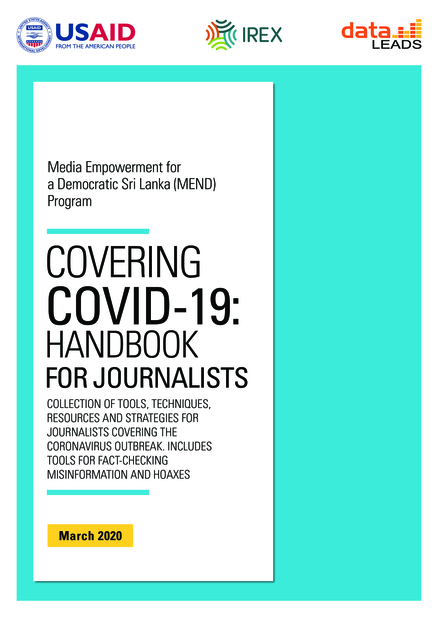Covering COVID-19: handbook for journalists. Collection of tools, techniques, resources and startegies for journalists covering the cornonavirus outbreak. Includes tools for fact-checking misinformati
Getting story ideas right -- Getting your sources right -- Getting your facts right -- Getting your report right -- Getting images and videos verified accurately -- Getting maps right -- Getting your language right


